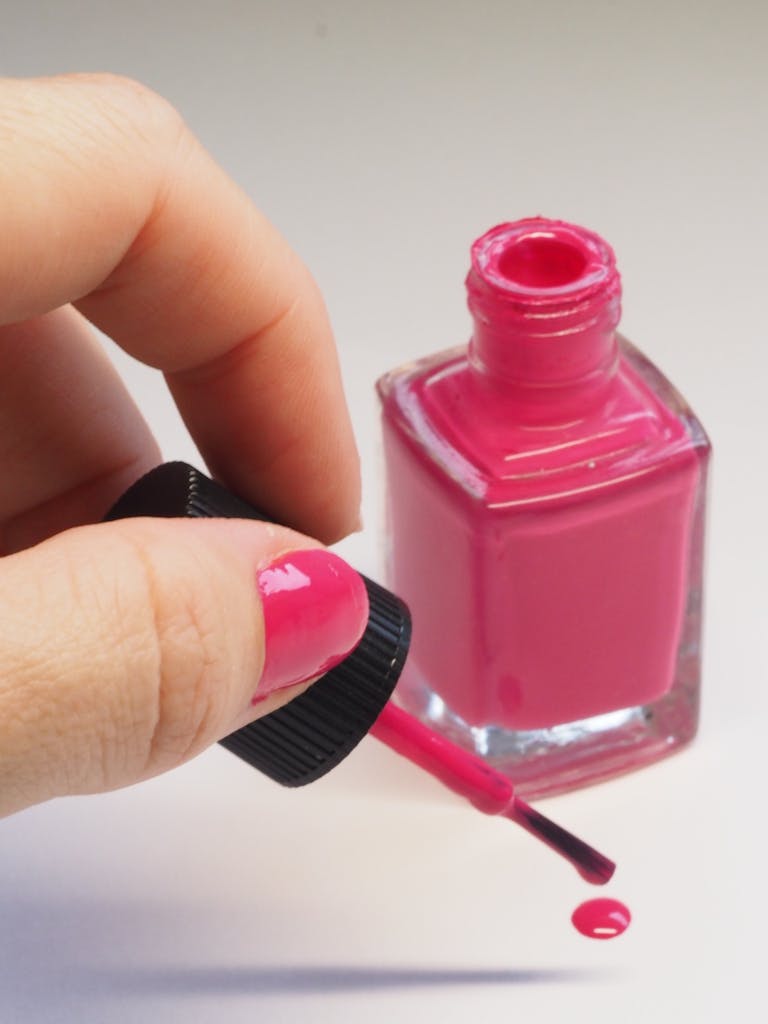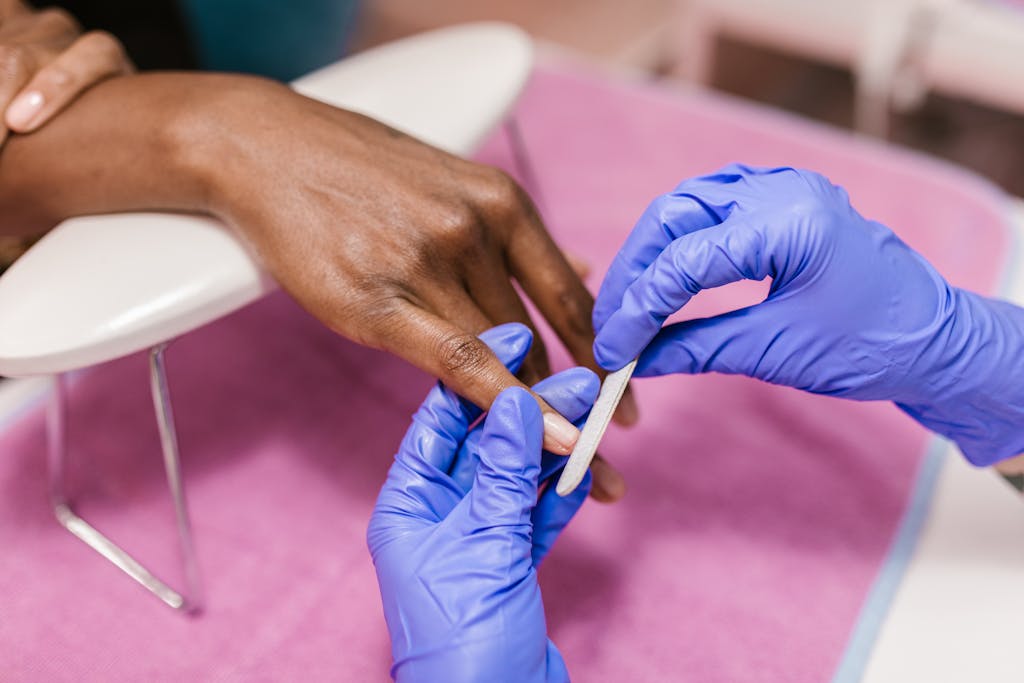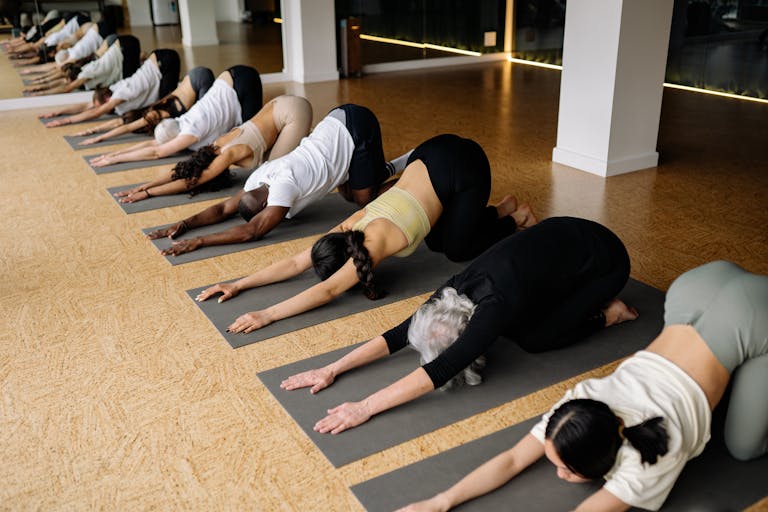Non-Toxic Gel Nail Polish: Are They Really Safe?
There’s nothing quite like the feeling of freshly painted nails—bold, vibrant colors that make you feel happy and bring a spark of joy. But the nagging question always remains with me: what’s actually in that gel nail polish?
Many of us are on a mission to find cosmetic products that don’t expose us to harmful substances, yet the world of gel manicure products is filled with toxic gel nail polishes that claim to be “clean” but still contain a number of nasty chemicals that raise concerns. So, are non-toxic gel nail polish options really safer, or are they just another marketing gimmick? As a consumer, if what you put on your body matters to you, you have the right to know!
Let’s dig into the research, understand what’s lurking in conventional nail polishes, and find truly safer alternative options that let us have gorgeous, healthy nails without compromising our well-being.

The Hidden Dangers in Gel Manicures
Traditional gel polish often contains harsh chemicals that can cause more than just surface-level damage from the application and removal process. Ingredients like formaldehyde resin, dibutyl phthalate, ethyl tosylamide, and triphenyl phosphate have been linked to everything from skin irritation to central nervous system effects. Some of these chemicals have been banned in other beauty products but still lurk in nail polish formulations.
The Scary Part (the truth that you came to this site for)
My goal is always to seek the truth and share it with you (hence this blog post). I have found in my research that many chemicals found in conventional nail polishes have been linked to potential harm beyond just skin irritation—they can also affect the central nervous system. One of the biggest concerns is triphenyl phosphate (TPHP), a chemical used in many nail polish formulations to increase flexibility and durability. Research has shown that TPHP is an endocrine disruptor, meaning it can interfere with hormone function, which in turn may impact neurological processes.
A 2015 study conducted by researchers at Duke University and the Environmental Working Group (EWG) found that after applying nail polish containing TPHP, participants showed measurable levels of the chemical in their bloodstream within 10-14 hours. The study tested urine samples before and after application, revealing a significant increase in diphenyl phosphate (DPHP), a metabolite that indicates the body is processing TPHP. This strongly suggests that chemicals from nail polish can be absorbed through the nails and skin, leading to systemic exposure.
Beyond TPHP, other chemicals like formaldehyde resin, dibutyl phthalate (DBP), and ethyl tosylamide have been linked to nervous system effects, including dizziness, headaches, and even potential long-term neurotoxicity with repeated exposure. DBP, in particular, has been banned in the European Union due to concerns over developmental and neurological toxicity.
Another concern is UV exposure. While non-toxic gel brands may eliminate some toxic chemicals, they still require specific curing times under UV lamps. Repeated exposure to UV light can lead to premature aging and potential skin damage. And let’s not forget about nail polish removers—many contain acetone, which weakens natural nails over time. So what is a pretty girl to do? And are there alternatives? Keep reading!

Are “Non-Toxic” Gel Polishes Truly Safe?
The good news? There are brands making an effort to create non-toxic gel nail polish that eliminates some of the most harmful chemicals. You may have seen labels like “5-free,” “7-free,” or even “15-free,” which indicate the number of chemicals removed from the formula.
However, it’s important to remember that just because a product removes certain toxic chemicals doesn’t mean it’s completely safe. Some brands swap one questionable ingredient for another, and research on long-term exposure to replacement chemicals is still limited. Do your own research when looking for non-toxic nail gel polish and check the ingredient list. I love using EWG. Their mission is to empower consumers with the research to make informed decisions about the products they use.
Safer Alternatives To Up Your Nail Game
If bright, beautiful nails bring you joy, there’s no need to give up your gel manicure routine entirely. Here are some safer alternative options that let you enjoy the beauty of a fresh manicure without the worry:
- Non-Toxic Gel Nail Polish Brands: Look for brands that eliminate formaldehyde resin, dibutyl phthalate, ethyl tosylamide, and triphenyl phosphate while using natural ingredients where possible. Some great options include:
- Dazzle Dry – A quick-drying, long-lasting polish without harmful chemicals.
- Zoya Gelie-Cure – A non-toxic gel nail polish system that strengthens natural nails.
- butter London – 10 Free nail formula made with clean ingredients.
- Londontown – Look for their non-toxic restorative nail polish called kur.
- Olive & June – A cleaner formula that skips the worst offenders.
- Breathable Polishes: Some formulas allow oxygen and moisture to pass through, keeping natural nails healthier.
- At-Home UV-Free Gel Manicures: Some brands offer a gel-like finish without needing a UV lamp. Check out Manicurist Green Flash Starter Kit. The system uses LED light.
- Better Nail Polish Removers: Look for soy-based or acetone-free removers to protect natural nails from excessive drying and breakage.
- Cuticle and Nail Care: Strengthen your nails and nail beds with nourishing oils and creams to reduce brittleness and breakage.

Conclusion: Joyful Beauty Without Compromise
You shouldn’t have to choose between a beautiful manicure and your health. While non-toxic gel nail polish is a step in the right direction, it’s essential to stay informed and choose brands that truly eliminate harmful ingredients. By switching to safer alternative products, you can enjoy the vibrant, long-lasting manicures you love—without the toxic nail polishes that can compromise your well-being.
After all, self-care should be joyful, not stressful. Bright-colored nails that aren’t compromising our health? Now that’s something to smile about! 🙂

